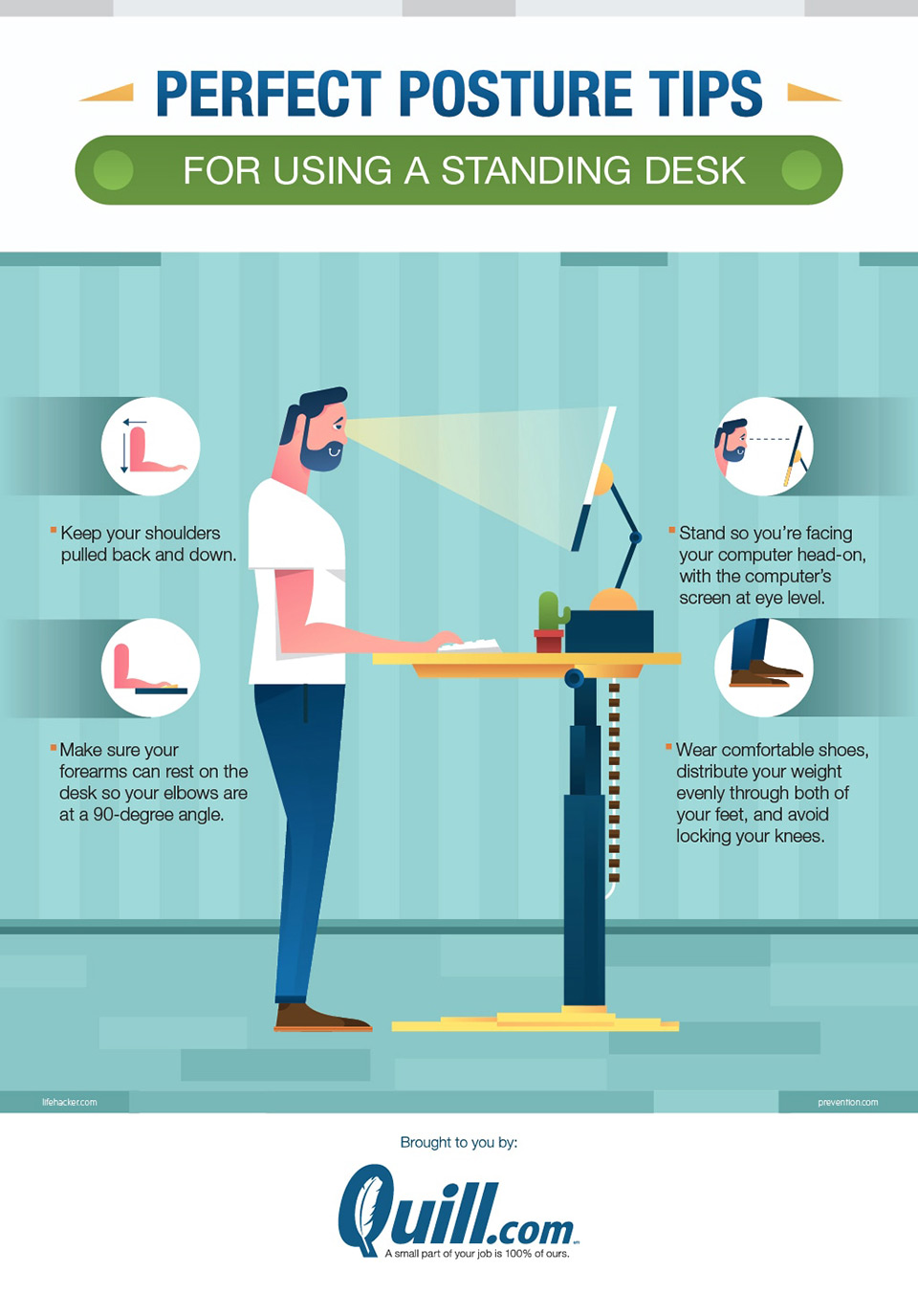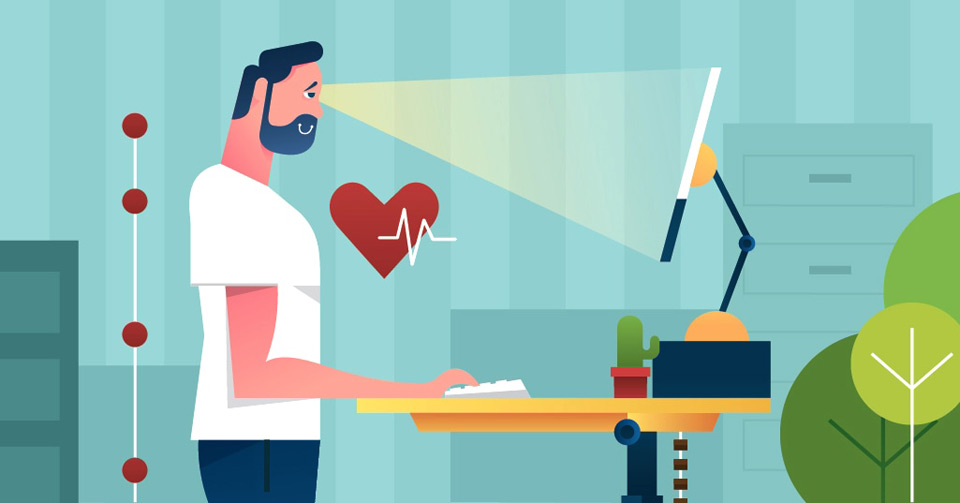Standing desks are one of the largest trends to transform American workplaces. According to a 2017 survey, a whopping 44 percent of employers provide or subsidize standing desks for their teams (up from 13 percent in 2013).
Why are standing desks sweeping the nation? As it turns out, they offer several impressive perks. Read on to learn six of the many benefits of standing desks—plus the best ways to use these simple tools to boost your health at work.
6 Benefits of Standing Desks
Research suggests standing desks:
- Help protect against the effects of sitting all day
Ample evidence indicates sitting all day is seriously bad for you. Research suggests sitting at a desk for 40 or more hours per week may increase the risk of diabetes, heart disease, metabolic syndrome, and other health issues. Sitting all day may even increase mortality risk. Using a standing desk for part of each day helps mitigate these risks. - Boost productivity
One study found using a standing desk for part of the day can significantly increase productivity—by nearly 50 percent. This may be because standing desks reduce physical discomfort that can be distracting, thereby reducing productivity. There's also a chance that standing desks enable greater cognitive performance, further enhancing productivity. - Improve energy and mood
A 2014 study found using a standing desk for just half of each workday improved participants' moods and energy levels while decreasing fatigue. These improvements have a stress-relieving effect, which may also boost productivity. - Improve cardiovascular wellness
Of all the health benefits of standing desks, this one may take the cake. There's evidence that using a standing desk may improve cardiovascular health in multiple ways.
Several small studies have found that alternating between standing and sitting during the day may reduce blood sugar spikes and lower blood sugar levels (especially when people use a standing desk after eating).
There's also some evidence that standing during the day may lower the risk of heart disease. This makes sense when you consider that sitting all day long has been found to increase the risk of developing heart disease. - Facilitate better posture
When used properly, standing desks can encourage you to use better posture than when you sit in a chair. These improvements in posture may reduce neck and back pain, which is an added bonus of using a standing desk. - Increase calorie burn
It probably comes as no surprise that sitting reduces muscular activity, which minimizes calorie burn throughout the day. In contrast, using a standing desk engages more muscles while you work, which can slightly increase calorie burn and improve circulation.
What's more, using a standing desk increases the odds that you'll move around more during the day—say, by walking to a neighboring cubicle or pacing while talking on the phone—because you're already on your feet. This can further increase calorie burn.

Get code to share this infographic on your site
Tips for Using a Standing Desk
Ready to give a standing desk a try? Set yourself up for success with these standing desk tips and hacks.
Don't feel pressured to break the bank.
There are a huge range of standing desks and accessories to choose from, which can sell for a few hundred up to several thousand dollars. But you don't have to make a major financial investment to enjoy the benefits of a standing desk. There are plenty of affordable DIY standing desk plans to try.
Watch your posture
While standing desks can improve your posture, you have to put in a little effort to enjoy this benefit. Here are a few tips for adopting proper posture at a standing desk:
- Make sure your forearms can rest on the desk so your elbows are at a 90-degree angle
- Keep your shoulders pulled back and down
- Stand so you're facing your computer head-on, with the computer's screen at eye level
- Wear comfortable shoes, distribute your weight evenly through both of your feet, and avoid locking your knees
Get a move on
While static standing may be healthier overall than static sitting, it's not without its own risks. There's some evidence that standing without moving for long periods of time may increase the risk of developing sore feet, swollen legs, varicose veins, stiffness, and muscular fatigue. You can help counteract these risks by practicing proper posture and moving throughout the day. For example, take a stroll to the water cooler, encourage coworkers to join you for walking meetings, or pace while you're on the phone.
Don't stand all day long
As noted above, standing constantly has its own potential consequences. Swapping out eight or nine hours of sitting for eight or nine hours of standing may not be the best way to enjoy greater health.
Instead, some experts suggest standing for two to four hours a day. Others suggest sitting for 20 minutes, standing for eight minutes, and then moving for two minutes before sitting again. Moral of the story: Alternate between sitting and standing throughout the day to reap the most benefits of a standing desk.
Whether you're looking to improve your posture, enjoy increased energy, or increase your calorie burn throughout the day (or all of the above), a standing desk may be a great fit for you
Share this infographic on your site
Laura Newcomer
Laura Newcomer is a writer, editor, and educator with multiple years of experience working in the environmental and personal wellness space. Formerly Senior Editor at the health site Greatist, Laura now lives and works in Pennsylvania. Her writing has been published on Washington Post, TIME Healthland, Greatist, DailyBurn, Lifehacker, and Business Insider, among others. She has taught environmental education to students of all ages in both Pennsylvania and Maine, and prioritizes living an environmentally sustainable lifestyle. She's a big proponent of creating self-sustaining communities and accessible healthy food systems that care for both people and the earth. An avid outdoorswoman, she can often be found hiking, kayaking, backpacking, and tending to her garden.


